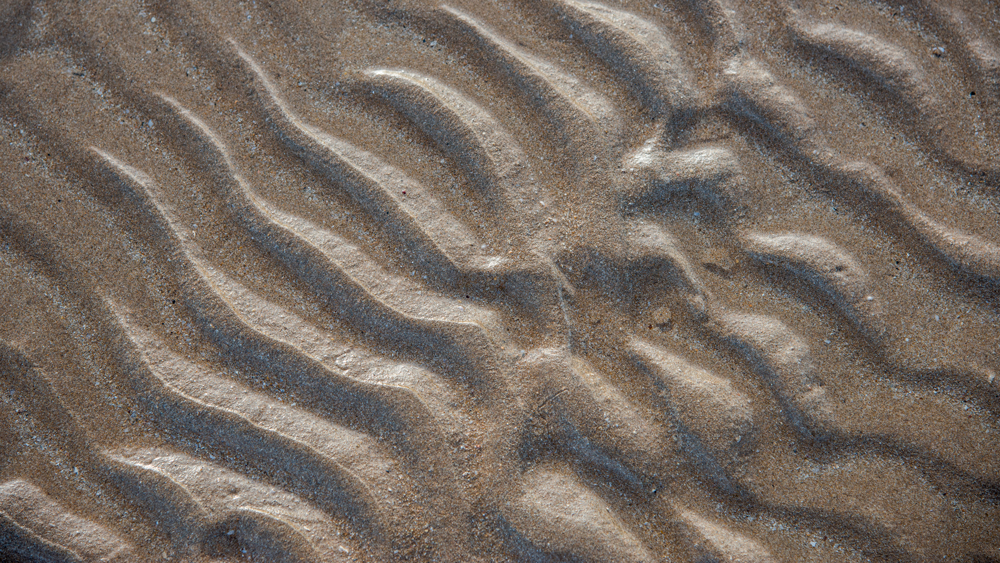
When Ashwin Gadgil, a doctoral candidate in the Department of Ocean Engineering at Texas A&M University at Galveston, was tasked by the U.S. Army Corps of Engineers to design beneficial-use islands in the Corpus Christi Bay made using dredged sediment pulled from the channel, several things were on his mind. Perhaps most important was to design the islands in such a way that the least amount of sediment was transported back into the channel by nature.
“This was a common theme that I observed in all the coastal projects I’ve worked on: everybody is really worried about where sediment ends up in a coastal region,” said Gadgil. “Especially when it ends up in a ship channel, because dredging up millions of cubic yards of sediment from a ship channel is exceedingly expensive, particularly when sediment starts showing up in places where you're not expecting it.”
Taking this observation and expanding upon it, Gadgil now works alongside faculty advisor Dr. John "Bert" Sweetman, ocean engineering professor, on several projects to develop models and/or methods to predict the movement of sediment in coastal areas. Gadgil’s research not only expands upon current knowledge but can also be applied by industry engineers and researchers to reduce both the cost and challenges of research and implementation when it comes to the prediction of sediment transport, such as in dredging projects.
Removing randomness
The first of these projects, Gadgil explained, aimed at removing the randomness associated with ocean waves in sediment transport through a new statistical model.
“Ocean waves are random; random waves cause random sediment transport,” he said. “At any particular location, you can have this wide range of values of sediment transport that may occur depending on the underlying phases (of the ocean). One simulation might suggest it’s 1.5 million cubic yards of sediment; one might say it's 1.7 million, one might say it's 2 million. So, what's the exact answer?”
Because of this wave randomness, the results of time-domain simulations – those which measure parameters over a given time – can vary significantly in a given coastal environment. To counteract this, researchers must run multiple simulations to find the average sediment transport.

The problem with that method, Gadgil said, is that it is computationally expensive. The simulations are run with time steps of a half- or quarter-second and are used to predict sediment transport over days, weeks or months. This requires a huge amount of computational resources to get enough data to average into an accurate prediction.
To remedy this, Gadgil developed a statistical method, titled Prediction of Sediment Transport in Evolving Probability Space (ProSTEPS), that predicts the average sediment transport in a single computation, eliminating the randomness in prediction with an overall accuracy of more than 99%.
Unifying pressure gradient research
Gadgil’s second project revolves around pressure gradients (the direction and rate of change in pressure at a particular location) under the mud line. While pressure gradients have been studied by many researchers, the literature about it is segmented and inconsistent.
To gain a comprehensive, fundamental understanding of how pressure gradients affect sediment transportation, he combined previous work on the subject to create a new formula that accounts for pressure gradient forces on the top layer of the sea bed.
“Once (the sediment) starts to move, there are various transport functions and equations that you can use to predict the total transport. We’re not going in that domain,” said Gadgil. “We are trying to study and make clearer under what conditions the sediment will move or not in the first place.”
Gadgil’s equation, which builds on the critical Shields parameter that determines whether a particle will move, explains how the pressure gradient at any given time will affect the critical Shields parameter and, thus, increase or decrease the likelihood for sediment to move.
The effect of ship wakes
The third project focuses on the effect that the immediate ship wake (the wave pattern caused by a moving boat) behind a vessel has on sediment transport.
“Immediately behind the ship is a very interesting area from a hydrodynamic standpoint, because you have this huge transverse ship wake that starts with a trough and this massive drop in pressure, which is combined with the propeller wash that's shooting out of the propeller of the ship, a combination of these effects can affect sediment transport significantly,” he said.
He explained that this particular aspect of his research, which is still in the early stages, focuses on ships in a bay like Corpus Christi or Galveston, where engineers need to minimize the amount of sediment that ends up in ship channels to reduce dredging costs, maintenance needs, etc.
“Like my advisor, Dr. Sweetman often says: science, for the sake of science, can be interesting, but if it's not applicable, then it's never going to be used,” said Gadgil. “So, you want it to be interesting and new, but you also want it to be applicable to real-life scenarios and to make a meaningful difference. That, in my opinion, really is what makes a good Ph.D. thesis.”